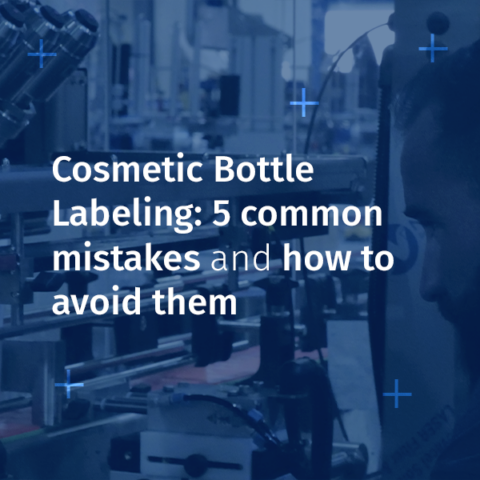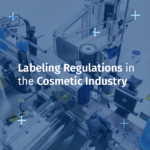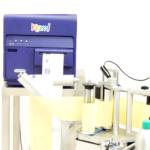In the cosmetics industry, labeling is far more than just sticking a label on a bottle it’s a key marketing tool, a regulatory requirement, and a vital part of the customer experience.
Whether you’re producing serums, creams, lotions, or balms, your product’s packaging plays an essential role in purchasing decisions.
A crooked, wrinkled, or unreadable label can damage your brand image and lead to compliance issues, especially in a market where consumers notice every detail.
Here are the 5 most common labeling mistakes on cosmetic bottles, their consequences, and how to prevent them.
- Misaligned labels
The problem
Even a slight misalignment is immediately noticeable and suggests poor quality control a major flaw in a sector where aesthetics matter.
Common causes
- Poor sensor positioning
- Incorrect settings for bottle size
- Conveyor speed not properly adjusted
Consequences
- Reduced visual appeal and credibility
- Risk of regulatory information being misplaced or unreadable
- Increased rejects and production waste
CDA Solutions
- Ninette Auto: Semi-automatic labeler applying two labels in a single operation on cylindrical products
- Ninon 1500: Automatic high-speed labeler with fine adjustments for perfect alignment
- Ninon Mix: Handles cylindrical, square, oval, and conical bottles while maintaining precision
-
Incorrect label tension
The problem
If the tension is too low, labels may wrinkle or bubble; if too high, they can tear or distort.
Common causes
- Improper machine settings
- Variations in label material thickness
- Poor label-machine compatibility
Consequences
- Visible aesthetic defects
- Unreadable barcodes or text
- Increased downtime and waste
CDA Solutions
Our labelers feature easy, precise tension adjustments to suit different roll types and ensure flawless application.
3. Label size not suited to the bottle
The problem
Oversized or undersized labels create a poor visual balance and may not adhere properly.
Common causes
- Incorrect bottle dimensions used during label design
- No pre-production testing on the labeling machine
- Changing suppliers without checking specifications
CDA Solutions
- Test your labels with sample bottles in our workshop before production
- Quick and easy adjustments for different bottle formats
4. Wrong adhesive or label material
The problem
Certain cosmetic ingredients can weaken adhesives, causing labels to peel over time.
Solution
- Choose labels resistant to moisture, oils, and temperature changes
- Ensure compatibility with bottle materials (glass, PET, aluminum)
5. No quality control after labeling
The problem
Even with well-adjusted machines, occasional errors can occur.
CDA Solutions
- Integrate camera inspection systems to check label placement and presence
- Use Solo or Ninon series labelers with automatic detection and rejection of defective products
Best practices for perfect labeling
- Have the manufacturer test your labels on your containers
- Train operators on adjustments and maintenance
- Regularly check consumables to ensure consistent performance
Why choose CDA for cosmetic bottle labeling?
At CDA, we offer:
- Semi-automatic: Ninette 1, Ninette 2, Ninette Auto, ideal for small batches or start-ups
- Automatic: Ninon 1500, Ninon Konic, Ninon Mix, for high-speed, precise, and flexible production lines
Conclusion
Labeling is a decisive step in cosmetic product packaging that impacts both perception and compliance. By avoiding these 5 mistakes and investing in reliable equipment, you can guarantee a professional, high-quality presentation for your products.







